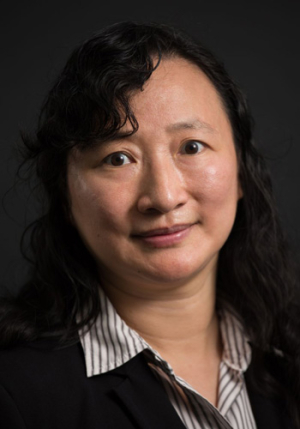Expanding the information superhighway goes far beyond consumers' desire to download video to portable devices more quickly.
Popular culture has certainly created a demand for the instantaneous transfer of video and other large files, but with medical and scientific advancements making possible Internet-based procedures such as telesurgery and telemedicine, there is significant competition for available bandwidth.
Until networks experience a complete bandwidth explosion—making all data transfers instantly downloadable—researchers are tasked with finding novel ways of transporting electronic information over the Internet more efficiently. Among these challenges is determining how to route information using existing network switching technologies, which are designed to transfer specific types of data such as video, images or text.
Using two National Science Foundation grants totaling more than $890,000, Yuhua Chen, assistant professor of electrical and computer engineering, is working on a solution. She is developing a multimode switching platform that supports each of the three current network switching modes—electronic packet switching, optical circuit switching and optical burst switching—making possible the transfer of all types of data using one piece of technology.
“There is currently no single technology suitable for all types of applications,” Chen said. “Application designers currently have to make compromises in terms of message delivery. They have to determine which type of switching technology is suitable for each type of message.”
Messages travel along the information superhighway to nodes, which are essentially interchanges that redirect Internet traffic. Most messages are converted through the process of electronic packet switching, where network switching nodes convert an incoming optical signal into an electrical one, interpret the message, convert it back to an optical signal and send it along to its destination.
Although optimal for interpreting short messages like voice or text, electronic packet switching often causes network delays for high-bandwidth applications, such as the high-definition (HD) video.
On the other hand, while optical switching technology is suitable for transferring high-bandwidth video over the Internet, neither of its practical alternatives, namely optical circuit switching and optical burst switching, is the best choice for short messages.
So, throughout the next five years, Chen will be utilizing a $587,570 grant from NSF’s Major Research Instrumentation Program to develop a multi-mode switching platform that will allow signals to be individually reconfigured to one of the three switching modes based on the dynamic traffic load on the network.
The research, she said, could allow network developers the ability to design applications without having to determine which switching mode is most optimal for that type of message.
“This technology could create an extensible Internet infrastructure capable of transferring all types of data quickly," she said.
In addition, Chen will utilize a three-year, $303,000 NSF grant to further investigate the interplay between applications and technology, specifically what happens when all applications share one piece of technology.
